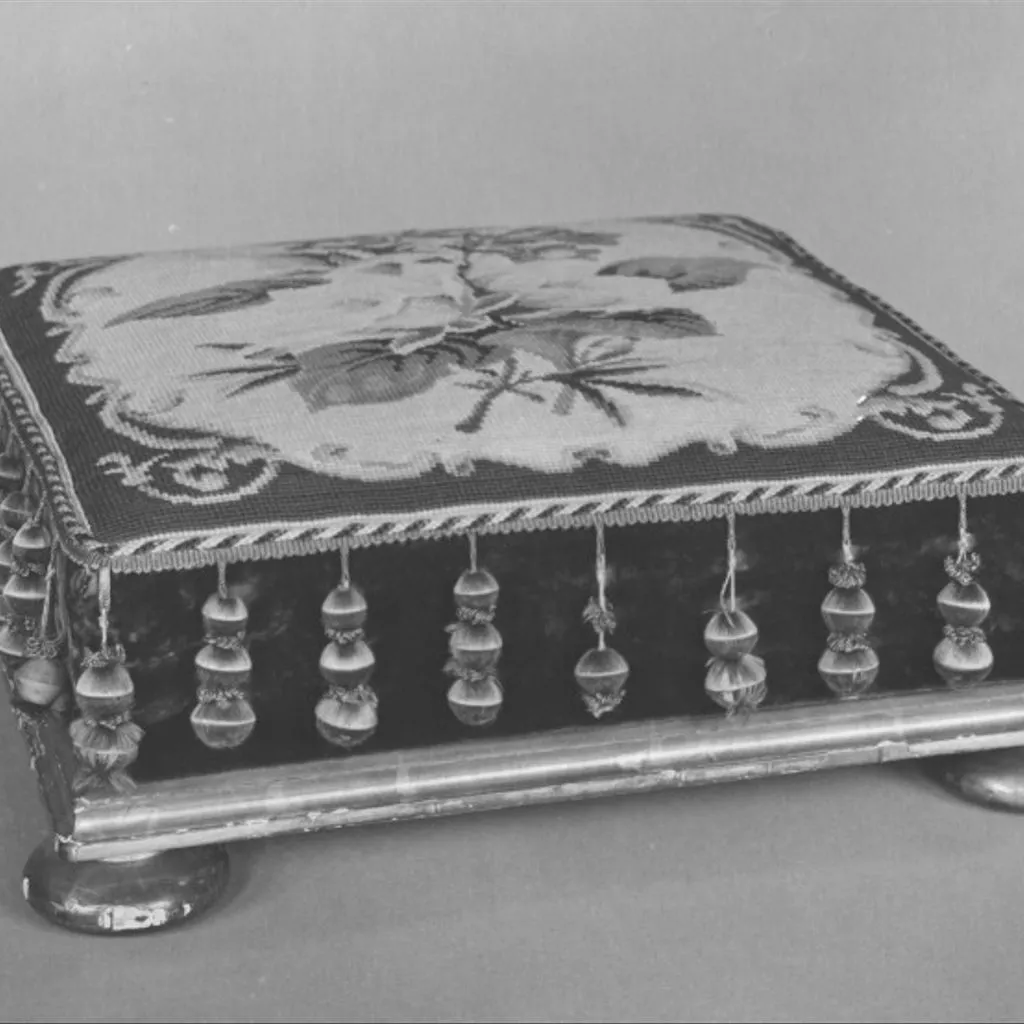Description
Footstool, upholstered with berlin work, 1840-1860; given by H.M. Queen Mary
Square footstool, gilt-wood (mahogany or oak stained to resemble mahogany), upholstered with red silk velvet, braid and tassels and an embroidery top depicting a spray of flowers and leaves set on a beige ground within a scrolling frame on a blue ground; the four rails are joined to each other and a stepped moulding has been applied near the bottom of each rail; a turned bun foot, also gilt, is screwed or tenoned up into each corner; the upholstery stuffing has been applied over the top of the rails, the embroidered cover then placed over the top of this, then the velvet strips applied to each side of the stool; along the top edge of the velvet strips is a single length of red and yellow braid from which the three-tiered 'pom-pom' tassels hang; a single length of yellow, red and brown cord runs along the top edge of the braid.
This stool was given to the V&A by Her Majesty Queen Mary (1867-1953), Consort of King George V. The Queen was known as an avid collector who favoured jewellery, fans and miniature furniture for which she commissioned several dolls' houses, as well as objects with a royal association. However, she was also one of the earliest collectors of Victorian decorative arts such as papier mâché and embroidery. She later offered much of her collection on loan and as gifts to the V&A for its Victorian Galleries. This stool is a good example of just the sort of decorative domestic object that appealed to the Queen.
The stool is decorated with Berlin work or woolwork, a type of embroidery sometimes used for furnishings. The name for this sort of work is derived from the type of wool used for it. Berlin wool, also known as Berlin yarn or German wool, was a high quality worsted yarn spun from combed wool, with a harder twist than other yarns. This made it more durable and therefore particularly suitable for this type of embroidery.






